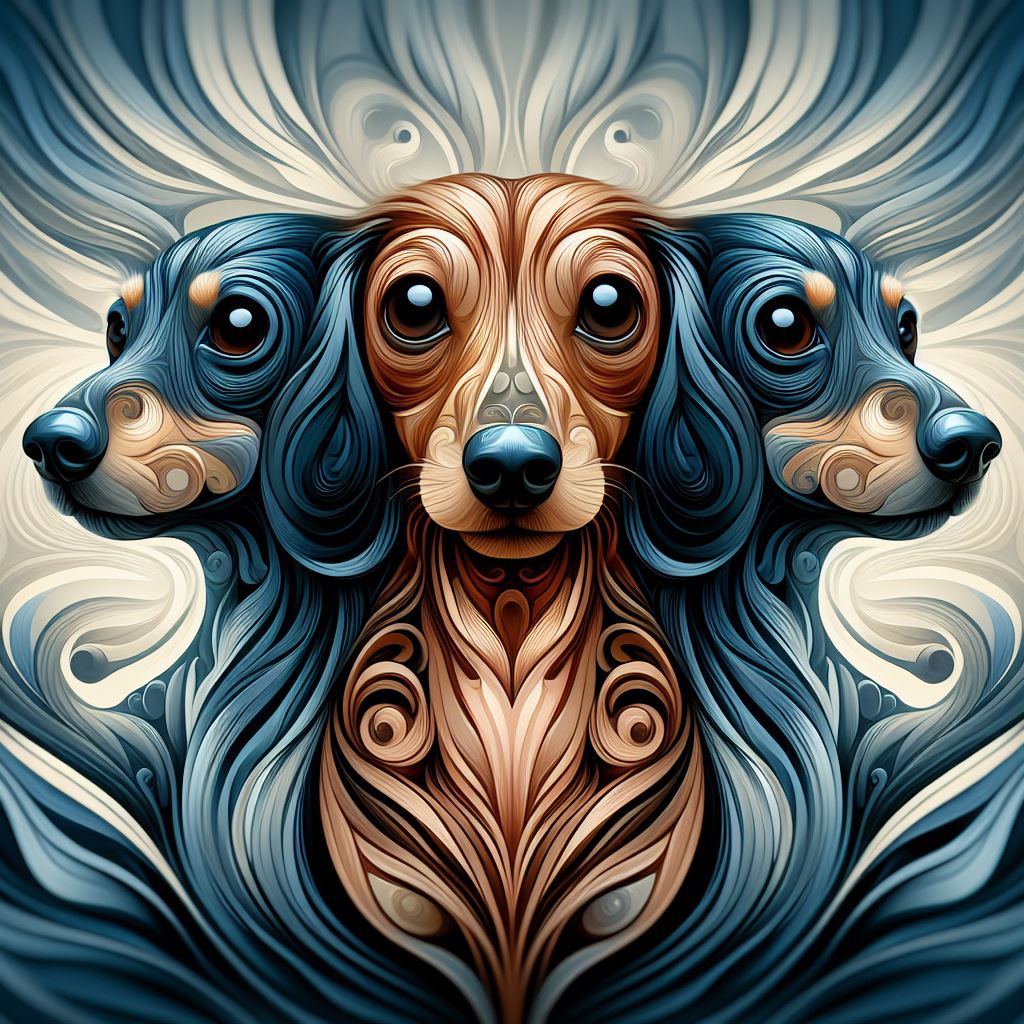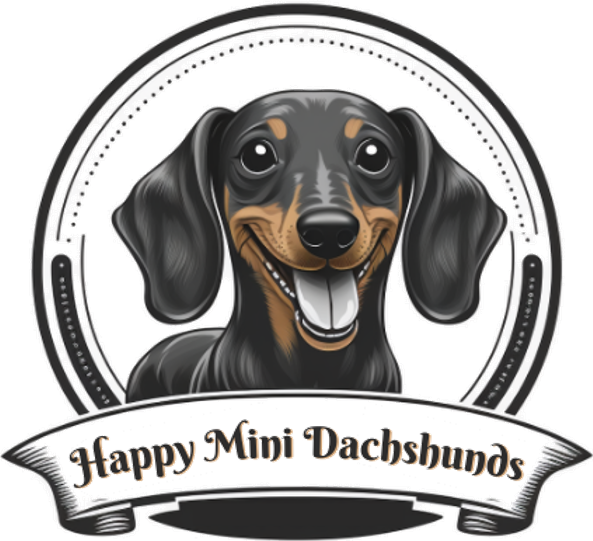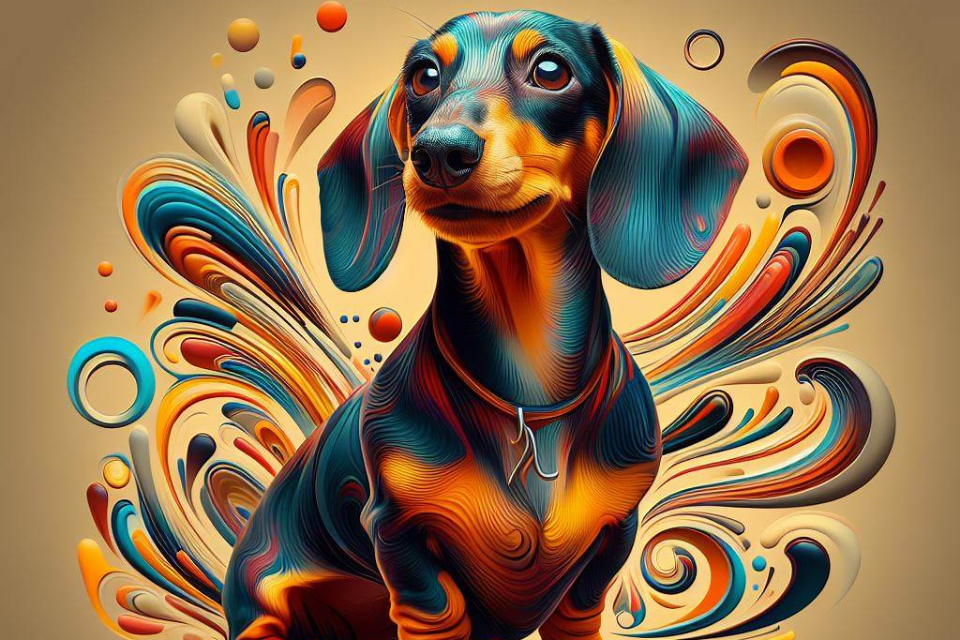Dachshunds, often referred to as “wiener dogs” or “sausage dogs,” are a fascinating breed that has captured the hearts of dog lovers around the world. Among them, the miniature dachshund stands out as a unique and charming companion. In this comprehensive guide, we will delve into the intricacies of the miniature dachshund breed, exploring everything from their history to their temperament and grooming needs. Whether you’re a seasoned dachshund enthusiast or considering bringing one into your home, this article is your go-to source for all things miniature dachshund.
Key Takeaways
- Dachshunds, known for their hunting heritage, have a distinct appearance with long bodies and short legs.
- Miniature dachshunds are characterized by a playful temperament and unwavering loyalty, making them excellent family pets.
- Welcoming a miniature dachshund puppy requires preparation, a structured routine, and positive reinforcement training.
- Grooming practices vary based on the coat type, with smooth-haired, long-haired, and wire-haired dachshunds each requiring specific care.
- Due to their long backs, dachshunds are prone to intervertebral disc disease, emphasizing the importance of preventive measures.
- The breed standard outlines the ideal characteristics of dachshunds, whether standard or miniature, ensuring their distinctive traits are preserved.
- Dachshunds serve as natural watchdogs, combining vigilance with loyalty to their families.
- Their instinct to burrow remains strong, making it essential to provide a cozy space for your dachshund.
- Understanding coat varieties and assessing compatibility with children are crucial considerations for prospective dachshund owners.
- In conclusion, caring for a miniature dachshund involves tailoring your approach to their unique needs, resulting in a fulfilling and lasting bond.
Dachshund: A Brief Overview
What Makes the Dachshund Breed Unique?
The dachshund, often affectionately called the “wiener dog” or “sausage dog,” stands out among dog breeds for its distinctive appearance. Characterized by a long body, short legs, and an alert expression, the dachshund’s unique features have made it an iconic breed. Originating in 15th-century Germany, dachshunds were originally bred for hunting badgers, showcasing their fearless and determined nature.
Exploring the Historical Roots of the Dachshund
The history of the dachshund dog breed is intertwined with its role as a skilled badger hunter. The breed’s name, “dachshund,” translates to “badger dog” in German, highlighting its primary purpose. Selectively bred to navigate badger burrows, dachshunds exhibited traits of tenacity, agility, and an excellent sense of smell. Over the centuries, they evolved into a versatile breed, not only excelling in hunting but also becoming cherished companions.

Miniature Dachshund Breed: Small Size, Big Personality
Understanding the Temperament of Miniature Dachshunds
While the standard dachshund is known for its hunting prowess, the miniature dachshund inherits the same spirited personality in a smaller package. These pint-sized canines are characterized by their playful demeanor, unwavering loyalty, and a bold attitude that belies their size. Their adaptability makes them well-suited for various living environments, from apartments to family homes.
Why Are Miniature Dachshunds Popular as Family Pets?
The miniature dachshund’s popularity as a family pet stems from its ability to form strong bonds with its human companions. Despite their small stature, they often see themselves as much larger dogs and approach life with confidence. Their affectionate nature makes them excellent companions for individuals and families alike, and their adaptable size allows them to seamlessly integrate into different lifestyles. In the next sections, we will delve into the intricacies of raising and caring for these charming miniature dachshunds.
The Puppy Chronicles: Welcoming a Miniature Dachshund into Your Home
What to Expect When Bringing Home a Miniature Dachshund Puppy
Bringing home a miniature dachshund puppy is an exciting adventure, but it comes with its unique challenges and joys. These puppies are known for their boundless energy and curiosity, so puppy-proofing your home is a must. Be prepared for a phase of exploration and adaptation as your new furry friend gets accustomed to their surroundings.
During the early days, it’s crucial to establish a routine for feeding, bathroom breaks, and playtime. Miniature dachshund puppies thrive on consistency, and a well-structured routine helps them feel secure in their new environment. Positive reinforcement is key to effective training, and early socialization is essential to ensure your puppy grows up to be a well-behaved and confident adult dachshund.
Tips for Effective Miniature Dachshund Puppy Training
Miniature dachshunds are intelligent and eager to please, making them relatively easy to train. However, their independent nature can pose challenges, so early and consistent training is vital. Begin with basic commands like sit, stay, and come, and gradually introduce more advanced commands as your puppy progresses.
Socialization is equally important, exposing your miniature dachshund to various environments, people, and other animals. This helps prevent the development of behavioral issues and ensures a well-rounded, adaptable adult dog. Additionally, crate training can be beneficial for housebreaking and providing your puppy with a secure space of their own.
Grooming Guide for Dachshunds
Unraveling the Coat Types of Dachshunds
Dachshunds come in three distinct coat types: smooth, long-haired, and wire-haired. Each type requires specific grooming practices to maintain their health and appearance.
Smooth-Haired Dachshunds: These dachshunds have short, sleek coats that are easy to maintain. Regular brushing helps minimize shedding and keeps their coat shiny. A soft brush or rubber grooming mitt is ideal for smooth-haired dachshunds.
Long-Haired Dachshunds: Long-haired dachshunds boast flowing locks that require more attention. Regular brushing is essential to prevent matting, especially in areas with longer hair, such as the ears and tail. A pin brush or slicker brush is effective for detangling long hair.
Wire-Haired Dachshunds: Wire-haired dachshunds have a dense, coarse outer coat with a softer undercoat. This coat type requires more frequent grooming to remove loose hair and prevent matting. Hand-stripping or using a stripping knife can help maintain the distinctive appearance of wire-haired dachshunds.
Essential Grooming Practices for a Healthy and Happy Dachshund
Regardless of coat type, all dachshunds benefit from regular grooming to keep their skin and coat in optimal condition. In addition to brushing, check your dachshund’s ears regularly for signs of infection, and trim their nails to prevent discomfort and potential injury. Bathing should be done as needed, typically every few months, using a dog-friendly shampoo to avoid skin irritation.

Dachshund’s Long Back: Understanding and Preventing Health Issues
Shedding Light on Intervertebral Disc Disease in Dachshunds
One notable feature of dachshunds is their elongated spine, which, unfortunately, can make them prone to intervertebral disc disease (IVDD). This condition occurs when the discs between the vertebrae degenerate, leading to spinal issues. To mitigate the risk, it’s crucial to discourage activities that put strain on their back, such as jumping on and off furniture. Regular veterinary check-ups are essential to monitor spinal health, and maintaining a healthy weight through a balanced diet can help prevent unnecessary stress on the spine.
Tips for Maintaining a Dachshund’s Spinal Health
Exercise is vital for a dachshund’s overall well-being, but moderation is key. Instead of activities that involve high jumps or intense running, opt for low-impact exercises like walking and swimming. Providing ramps or steps for your dachshund to access elevated surfaces can reduce the strain on their back. Additionally, investing in supportive bedding can contribute to their comfort and spinal health.
Related: Does Pet Insurance Cover Dachshund Back Problems?
Dachshund’s Unique Appearance: From Hound to Miniature French Pointer
Exploring the Breed Standard of Dachshunds
Dachshunds have a distinct appearance outlined by the breed standard, whether they are standard or miniature. The breed standard describes their ideal size, coat type, and color variations. The American Kennel Club (AKC) recognizes two sizes: standard and miniature. Standards typically weigh between 16-32 pounds, while miniatures range from 11 pounds or less. Adhering to the breed standard ensures the preservation of the dachshund’s unique traits.
Understanding the Two Sizes of Dachshunds: Standard and Miniature
Both standard and miniature dachshunds share the same characteristics, but their size sets them apart. Miniature dachshunds, bred down from the standard size, were initially created for hunting smaller prey. Despite the size difference, both versions exhibit the same spirited personality, loyalty, and distinctive appearance that make dachshunds beloved companions.
Dachshund Dog Breed as a Watchdog: Loyalty and Vigilance
The Natural Watchdog Instincts of Dachshunds
Dachshunds, known for their tenacity in hunting, have retained their watchdog instincts. Their acute sense of hearing and strong protective instincts make them excellent watchdogs. While they may not be the largest in stature, their loud bark and keen awareness make them effective at alerting their owners to potential threats.
How Dachshunds Make Both Loyal Companions and Effective Watchdogs
Beyond their watchdog capabilities, dachshunds are incredibly loyal to their families. Their affectionate nature and strong bond with their owners contribute to their effectiveness as both companions and protectors. Proper training and socialization enhance these qualities, ensuring a well-rounded and dependable furry friend.

Burrowers at Heart: Dachshunds Personality, Temperament and Their Innate Need to Burrow
The Instinctive Behavior of Dachshunds to Burrow
Rooted in their history as skilled badger hunters, dachshunds have retained a distinctive instinct to burrow. This behavior served them well in the wild, allowing them to navigate the intricate tunnels of badger dens. In a domestic setting, this instinct manifests as a preference for snug and enclosed spaces.
Dachshunds often seek out cozy nooks, whether it be a blanket, a corner of the couch, or even beneath the covers of your bed. This behavior is not just a quirk but a manifestation of their ancestral instincts, providing them with a sense of security and warmth.
Creating a Safe and Cozy Space for Your Dachshund
Understanding and accommodating this burrowing instinct is crucial for ensuring your dachshund’s well-being. Consider providing a designated and comfortable space where your furry companion can indulge in their burrowing tendencies. This could be a soft dog bed with raised sides or a cozy blanket in a quiet corner.
Moreover, you can enhance their burrowing haven with a few familiar items, such as a favorite toy or an item of your clothing, imbuing the space with scents that offer reassurance. By acknowledging and supporting this natural behavior, you not only cater to your dachshund’s instincts but also contribute to their overall contentment and happiness in your home.
Coat Varieties: Smooth, Long-Haired, and Wire-Haired Dachshunds
The Distinctive Features of Smooth-Haired Dachshunds
Smooth-haired dachshunds have short, glossy coats that require minimal maintenance. Their sleek appearance showcases their muscular bodies. Regular brushing helps reduce shedding, and occasional baths keep their coat clean and shiny. Smooth-haired dachshunds come in various colors, including solids and dapples.
Caring for the Long-Haired and Wire-Haired Varieties
Long-haired dachshunds boast elegant, flowing locks that require more attention. Regular brushing prevents tangling and matting, particularly in areas with longer hair, such as the ears and tail. Wire-haired dachshunds have a dense, coarse outer coat with a softer undercoat. This coat type benefits from more frequent grooming to remove loose hair and maintain their distinctive appearance.
Dachshund and Children: A Perfect Match?
Assessing How Dachshunds Interact with Children
Dachshunds are known for their affectionate nature, making them generally good companions for families. While they may not be the largest dogs, their sturdy build and playful demeanor make them suitable for interaction with children. However, it’s crucial to monitor these interactions, especially with younger children, to ensure a positive experience for both the child and the dog.
Precautions and Recommendations for Families with Young Children
While dachshunds are often good with children, certain precautions should be taken. Due to their elongated bodies, dachshunds may be more prone to injury if mishandled, so teaching children how to interact gently is essential. Additionally, always supervise interactions between dogs and young children, and teach children to respect the dog’s boundaries. With proper training and supervision, dachshunds can become cherished members of families with children.
Conclusion: Unleash the Wonders of the Miniature Dachshund
In summary, the miniature dachshund is a captivating breed that combines charm, intelligence, and loyalty. From their unique appearance to their watchdog instincts and need to burrow, each aspect of their personality contributes to their appeal as companions. Remember to tailor your care routine to their specific coat type, monitor their spinal health, and provide a secure and loving environment.
Dachshunds, whether standard or miniature, bring joy and companionship to households around the world. As you embark on the journey of caring for a miniature dachshund, keep in mind the importance of early training, regular grooming, and understanding their distinct traits. By doing so, you’ll not only enhance your bond with your furry friend but also ensure a happy and healthy life for your miniature dachshund companion.

